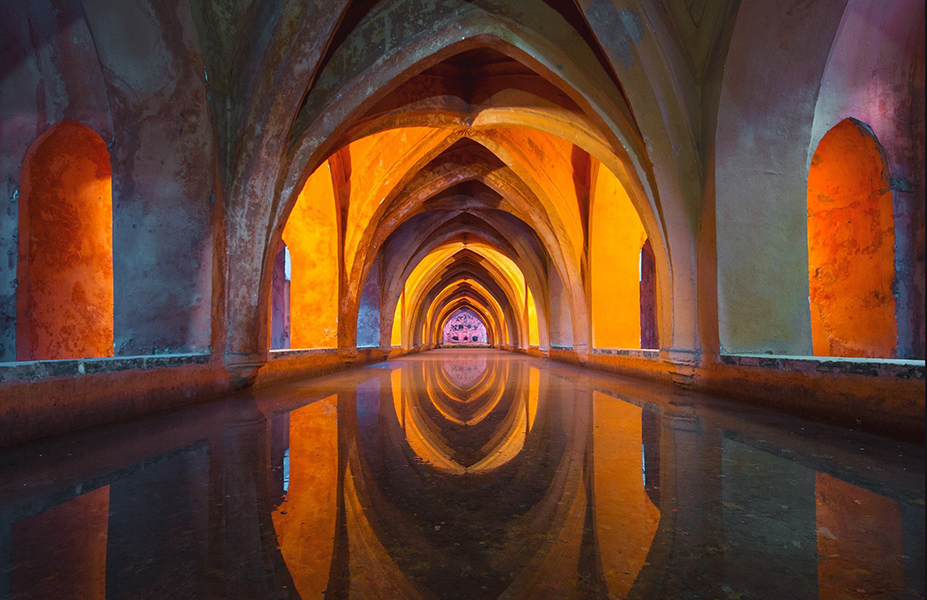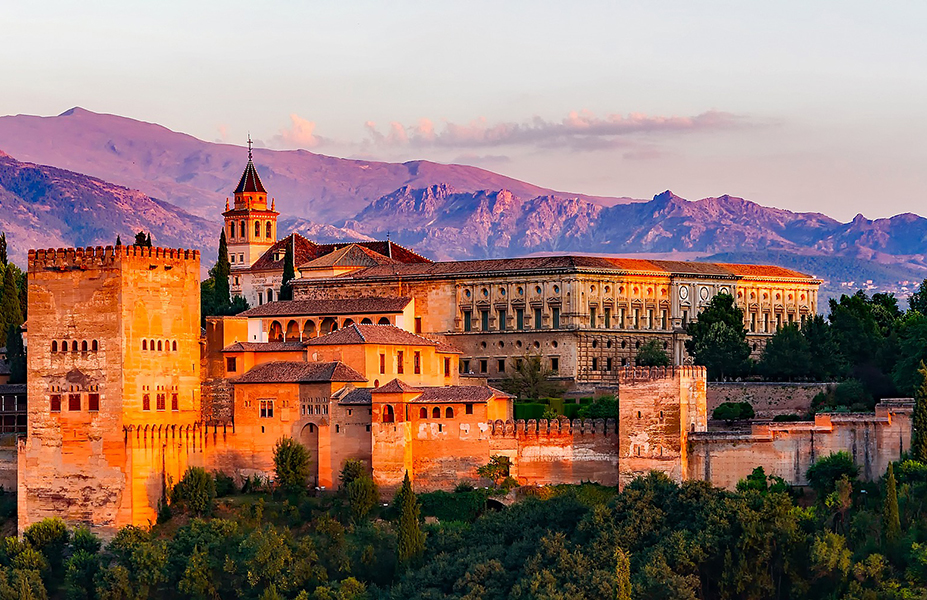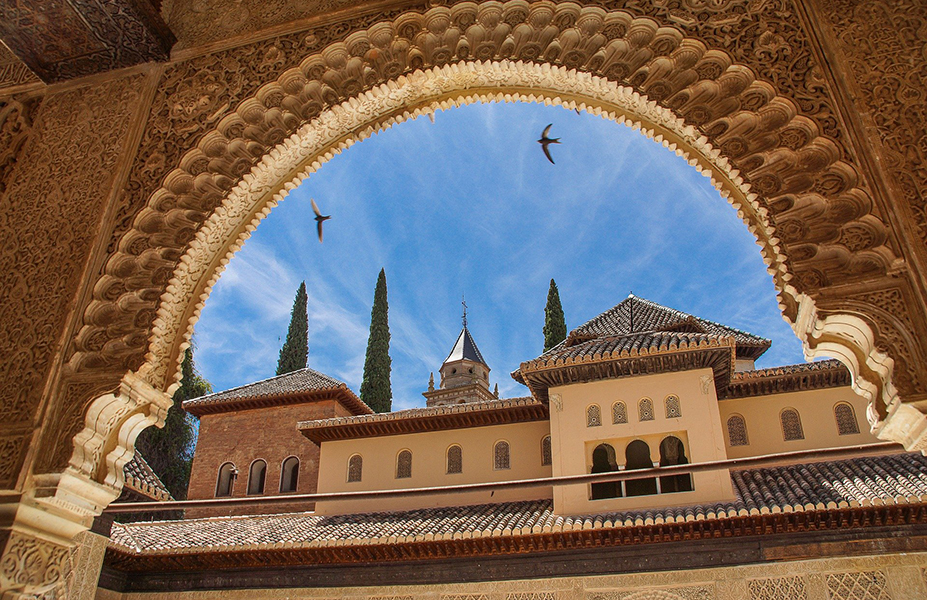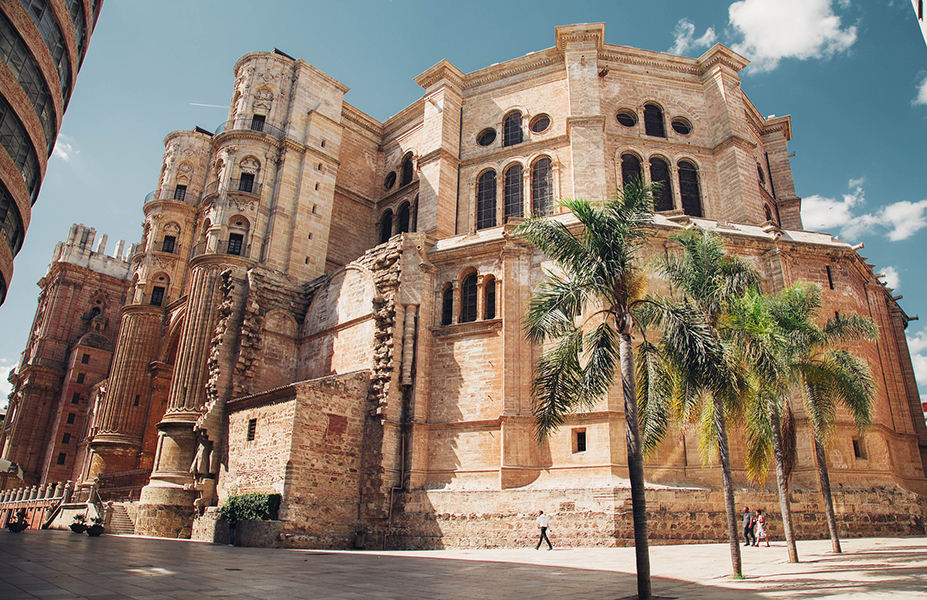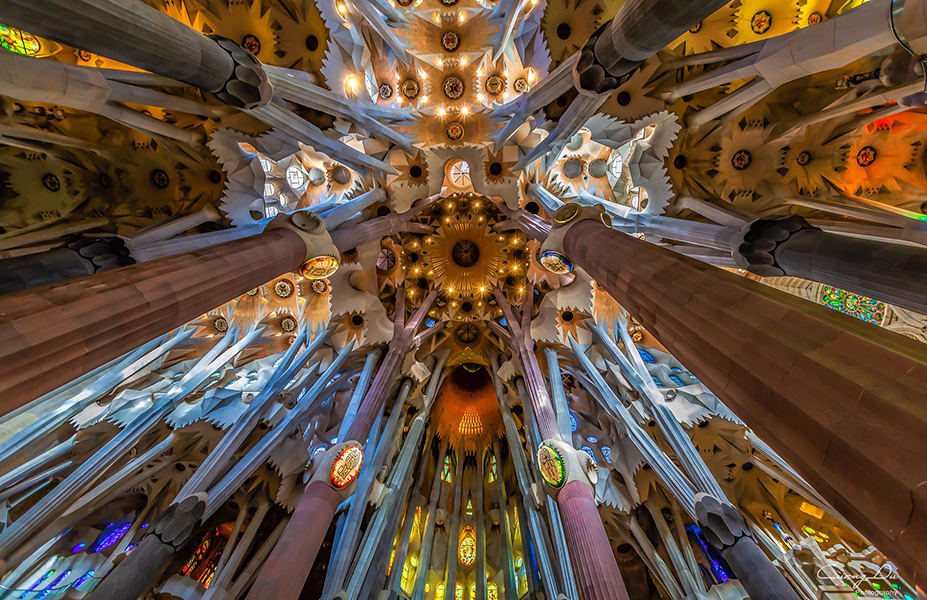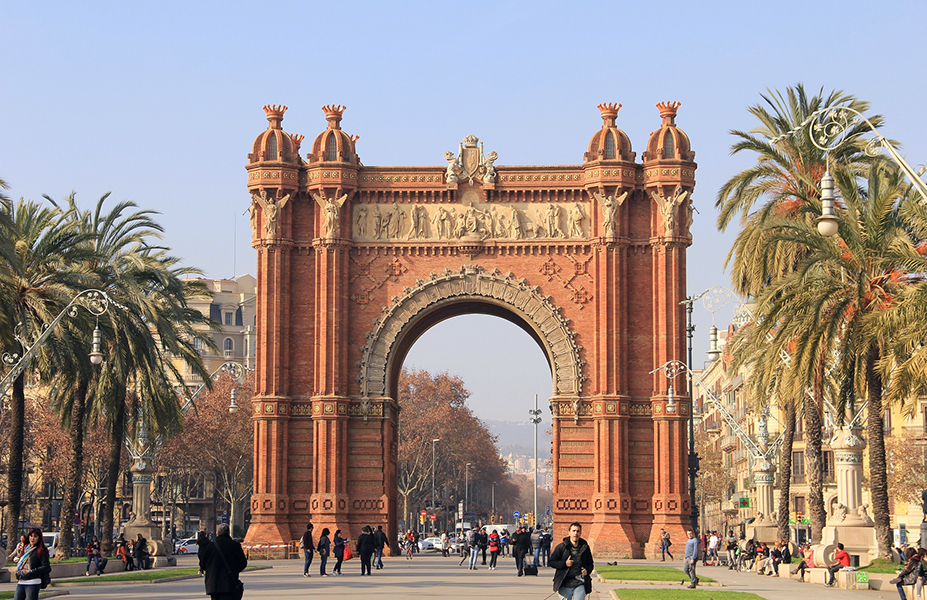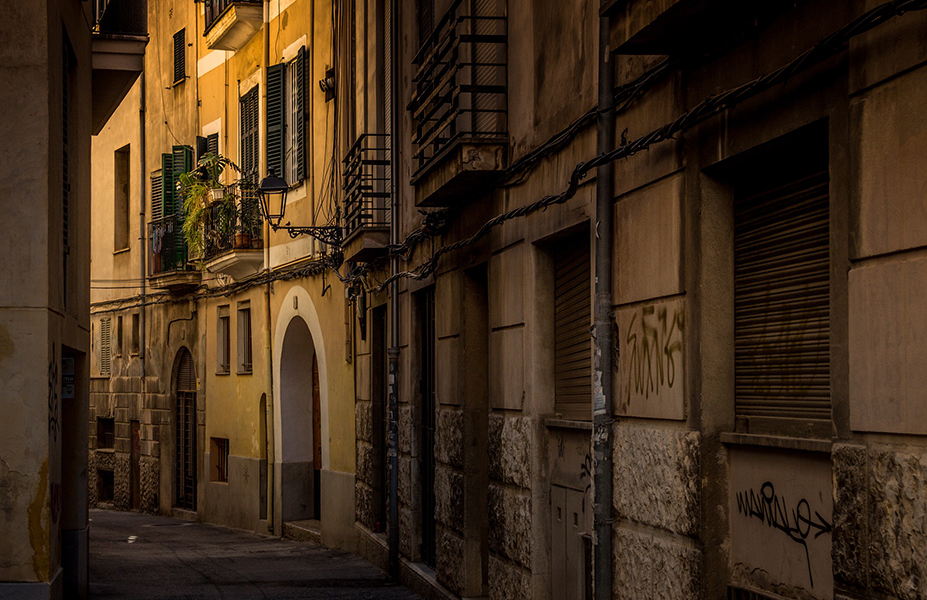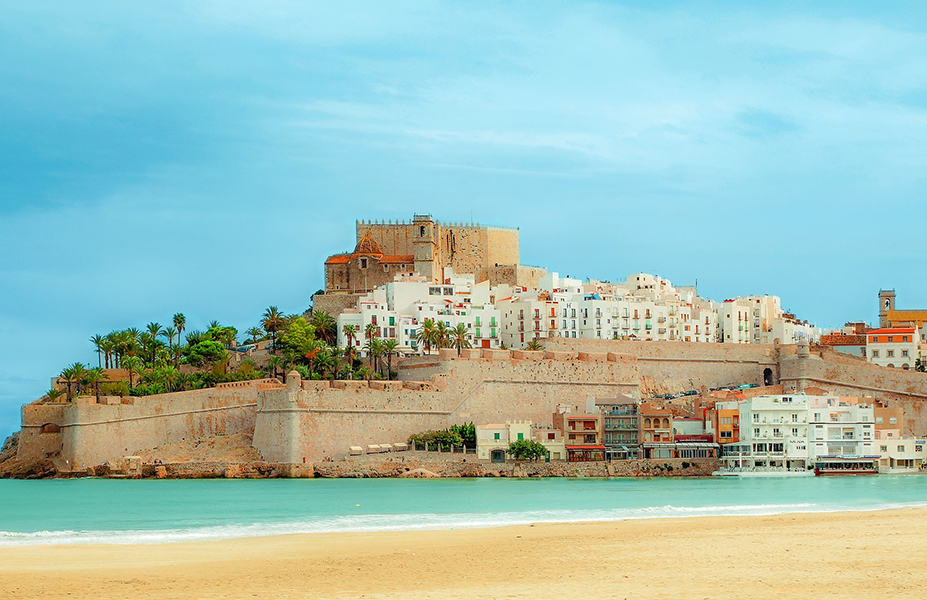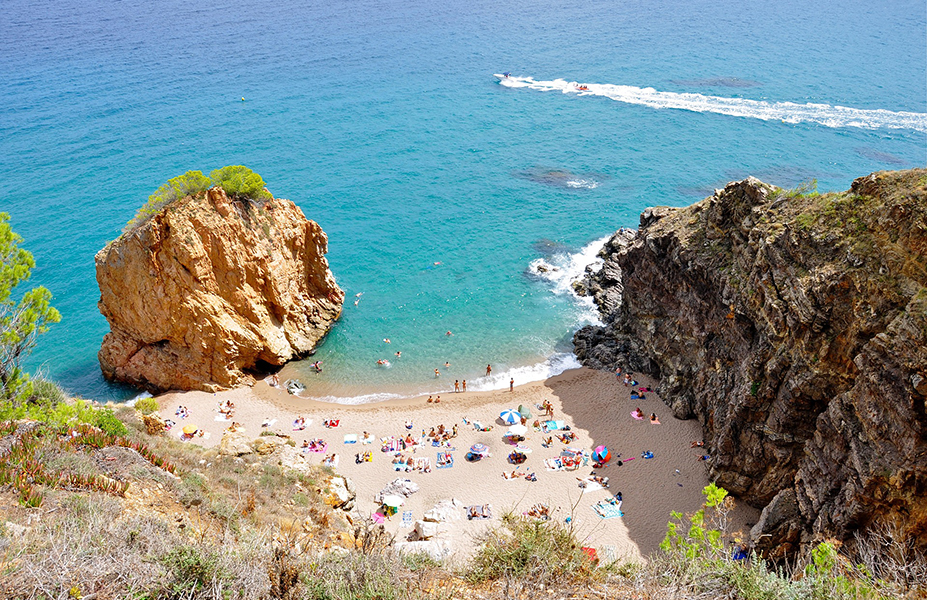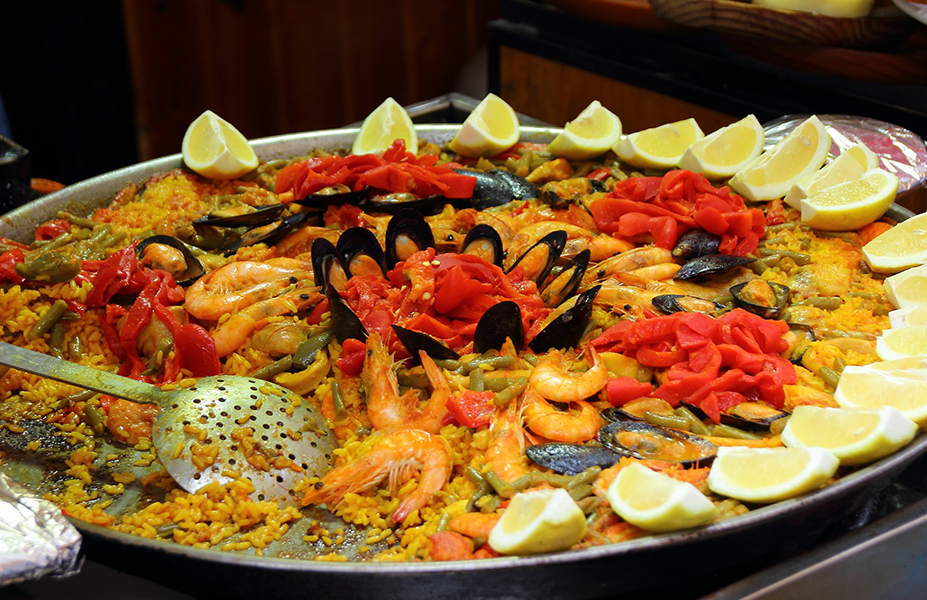Don’t miss next deals! Sign up for email alerts. Subscribe to #europe alerts »
Currency – Euro (€)
Language – Spanish
Vaccine – No vaccinations are required.
Electricity – 230V. 50 Hz. Power plugs and sockets are of type C and E
EMERGENCY TELEPHONES
National Police: 091
Medical emergency: 061
Emergencies: 112
Spain is a destination worth knowing and revisiting, whether for its popular islands such as Ibiza and Mallorca, its enviable Mediterranean climate, museums, or good food. This country gets the third highest number of entries in the world.
TOURIST SITES OF SPAIN
The Alhambra of Granada – The Alhambra was a fortress and palace built in the mid-13th century by the Nasrid kingdom of Granada. Granada is the capital of the autonomous community of Andalusia. Its name translates to “Red Castle” in Arabic. It is distinguished by hundreds of palaces that are surrounded by extensive gardens and lead to a huge citadel.
It was designated as a UNESCO World Heritage Site in 1984, and it became the second most visited monument in Spain in 2016 due to its beauty and historical significance. It attracted more than 2 million visitors at the time.
Royal Palace of Madrid – It is the largest palace in Western Europe, covering 135 thousand square meters. The Kingdom of Toledo built the structure in the 9th century, and it was later used by the Kings of Castile. A devastating fire destroyed much of the infrastructure several years later. However, on King Felipe V’s orders, it was renovated in 1735.
Mosque of Córdoba – The famous Mosque-Cathedral of Córdoba is a structure in Córdoba, Spain, that began construction in 786 as a result of the Muslims’ appropriation of the existing Hispano-Roman church following the city’s conquest.
It was originally intended only for Islamic cults, but after some expansion work, it became the world’s second largest mosque in terms of surface area (23,400 square meters).
It was consecrated as a Cathedral after the Christians reconquered the city in 1238. Millions of visitors visit it today as an impressive memorial.
The Sagrada Familia – La Sagrada Familia is a Spanish temple dedicated to penance, located in Barcelona. Antoni Gaud, a well-known architect, designed this Catholic basilica.
It is the third most visited monument in the European country, despite the fact that it is still under construction (it began in 1882).
It is also the most well-known and visited church, second only to the Vatican’s famous St. Peter’s Basilica. According to experts, when it is completed, it will be the world’s highest church.
The temple is built in a neo-Gothic and organic style. The majority of the buildings are inspired by nature. The site’s interior is also similar to a forest.
Aqueduct of Segovia – With its 167 arches, it is probably Spain’s most important Roman monument. It was in charge of supplying water to Segovia’s city. According to historians, it was constructed in the first years of the second century after Christ (AD), when Emperor Trajan’s reign was coming to an end.
In 1985, UNESCO designated it as a World Heritage Site. The arcade that runs through the city’s Plaza del Azoguejo is the most well-known and visible space. The aqueduct is notable for traveling 15 kilometers before arriving in Segovia.
Cathedral of Burgos – This temple, which was built in 1221 according to French Gothic designs, was built to provide exclusive Catholic worship to the Virgin Mary from the Spanish city of Burgos. In the 15th and 16th centuries, it underwent several significant changes. The central façade, the transept dome, and the Constable’s chapel all underwent significant changes.
City of Arts and Sciences of Valencia – This 21st-century avant-garde architectural complex was designed by Valencian architect Santiago Calatrava and opened in 1998. We will see a mix of culture, art, recreation, and science in this work of art.
Without a doubt, one of Valencia’s most symbolic and tourist attractions, where both children and adults can have fun and learn in the best possible way. The first rule, and the Museum’s motto, is “it is forbidden not to touch, feel, or think.”
Wall of Ávila – The famous Wall of Vila is a massive Roman-era military fence that runs alongside the old town of Vila. Built in the 11th century, it is one of Europe’s best-preserved medieval architectural structures. It was designated as a World Heritage Site.
Monastery of San Lorenzo del Escorial – Between the years 1556 and 1598, this Monastery was erected on King Felipe II’s whim. This is a commemoration of the battle of San Quentin’s triumph. It was also built as a memorial to the Spanish martyr San Lorenzo. There is a royal palace, a basilica, a pantheon, a school, a monastery, and a library, the latter of which contains over 6,000 manuscripts. It was also the site of the Spanish kings’ burials for several years.
Cathedral of Santiago de Compostela – Santa Apostólica y Metropolitana Iglesia Catedral de Santiago de Compostela is the official name of this cathedral. It is a Catholic temple located in the homonymous city of Santiago de Compostela, in the center of the Spanish province of La Coruna.
This site was said to be the tomb of the Apostle Santiago, according to legend. As the Middle Ages progressed, this attraction made the location one of the most important pilgrimage sites in Europe. The Camino de Santiago, one of the oldest penances still practiced today, started at that time.
DAILY LIFE
Lunch is served between 2:00 and 3:00 p.m., and it is the principal meal of the day. Traditionally, it was followed by a nap—the famous siesta—but this custom is fading as most people now commute between home and work. Supper, a lighter dinner, is often served late, between 9:00 and 10:00 p.m., or even later in the summer.
IN BARS AND RESTAURANTS
Pubs and music bars are generally open from 6:30 p.m. to 3:00 a.m., and nightclubs open at 11:30 p.m. and close at approximately 5:30 a.m.
TIPS
Tipping is not a traditional part of Spanish culture. In Spain, as in much of Europe, hospitality workers are typically full-time and earn a living wage, so don’t expect a tip for a job that is already paid for.
RELIGION
60.2% Catholics
3.7% Protestant sects
2.7% followers of other faiths (including Islam, Buddhism etc.)
35.5% atheists
13.7% agnostics
HOLIDAYS
January 1: New Year
January 6: Epiphany of the Lord
Moveable: Holy Thursday, Holy Friday
May 1: Labor Festival
May 2: Feast of the community
July 25: Santiago Apóstol
August 15: The Assumption of the Virgin
October 12: National Holiday of Spain
November 1: All Saints
6th of December: Day of the constitution
December 8: The Immaculate Conception
December 25: Christmas
CLIMATE
It’s difficult to define a climate in Spain because each region is so different. The cold that the Aragonese Pyrenees can have in the winter is not the same as the Mediterranean climate that exists in Malaga in February.
In central area the climate is extreme continental, with long summers and winters and strong thermal oscillations. Very rigorous winter, with frosts and snowfalls in the Sierra and muggy summers.
In coastal area mediterranean climate, mild winters and hot summers.
In Spain, the most typical are “tapas”, appetizers that accompany drinks. They are served and charged together. There is a wide variety of “tapas” of fish, preserves and salted meats, sausages and traditional cuisine stews.
TYPICAL DISHES
Paella a la Perellada: with fish, seafood, poultry and meat.
Zarzuela: based on grouper, monkfish, lobster, prawns, squid, mussels.
Suquet de peix: seafood stew of various fish.
Escudella and carns d’olla: typical dish, consisting of dried beans, sausage of various styles, and “pilota”. Peus de porc: pig’s feet
Migas: made with flour or bread and are accompanied by “chunks” of grilled fish, fried bacon, blood sausage, pork, herring, radishes, among others.
Los Gurullos: They are an autumn-winter stew, which is used to cook game meat.
Parrillada: Grilled fish and seafood, highlighting those of “gambón de Almería”.
Gazpacho: It is a refreshing dish for the summer.
BEVERAGES
Among the drinks is brennivn, a local brandy known as the “Black Death” because it is seasoned with caraway seed
LOCAL FRUITS
Strawberries from Aranjuez, citrus fruits, especially oranges, apples, apricots, bananas, pears, peaches, and plums, grapes.
AIR TRANSPORT
The fastest way to travel from one end of Spain to the other is by plane. This mode of transportation is recommended primarily if you are planning a single trip of a few days to visit some of the country’s most important cities. It is the most efficient mode of transportation.
You can get to Madrid by plane, from the main cities of Spain and the world. Its Barajas airport is located about 15 km from the center.
Barcelona International Airport is located in El Prat de Llobregat, about 14 km. from the city, directly connected by the Castelldefels highway. Virtually all land transport makes the journey from the airport to the city and vice versa. Train departures from the airport occur every 30 minutes. The stops to or from the Airport are El Clot, Arc de Triomf, Plaza Catalunya and Sants.
BOAT TRANSPORT
Barcelona and its port is one of the most important in the Mediterranean. Its connections with Palma de Mallorca are several a week. There are also connections with Ibiza and Menorca. Barcelona is also connected to Genoa, Porto Torres, Livorno and Rome through a ferry, with several weekly services.
BUS TRANSPORT
The most common schedule for the bus line is from 6:00 a.m. to 11:00 p.m. From then on, nine night lines cover almost the entire city.
Numerous bus lines reach the capital of Spain from all over the peninsula.
There are also numerous companies that connect with the main towns of the Community.
METRO TRANSPORT
The subway is one of the most used transports. Their hours are from 05.00 to 23.00. Monday to Thursday, from 05.00 to 01.00. Fridays, Saturdays and the eve of holidays. Holidays during the week from 06:00 to 23:00 . and on Sundays from 06.00 to 24.00.
RAILWAY TRANSPORT
There are commuter trains that connect the capital with the main municipalities of the city such as Alcalá de Henares, Aranjuez, Colmenar Viejo, Chinchón, El Escorial. Trains arrive to the capital from all over the Spanish territory.
ROAD NETWORK
Their road surface is in good condition and they are wide and fast.
DRIVING
In Spain, driving is on the right side of the road, all passengers must wear seat belts, and all roads have speed limits. On dual carriageways and highways, the speed limit is 120 km/h; on all other roads, the speed limit is 90 km/h; and in built-up areas, the speed limit is 30 km/h.
RENTAL CARS (We recommend reserving us in advance):
There are representations of almost all car rental companies.
RENT A CAR at Madrid International airport >>>
TAXIS
You will find numerous taxis, they are metered and are governed by official rates.
Don’t miss next deals! Sign up for email alerts. Subscribe to #europe alerts »



